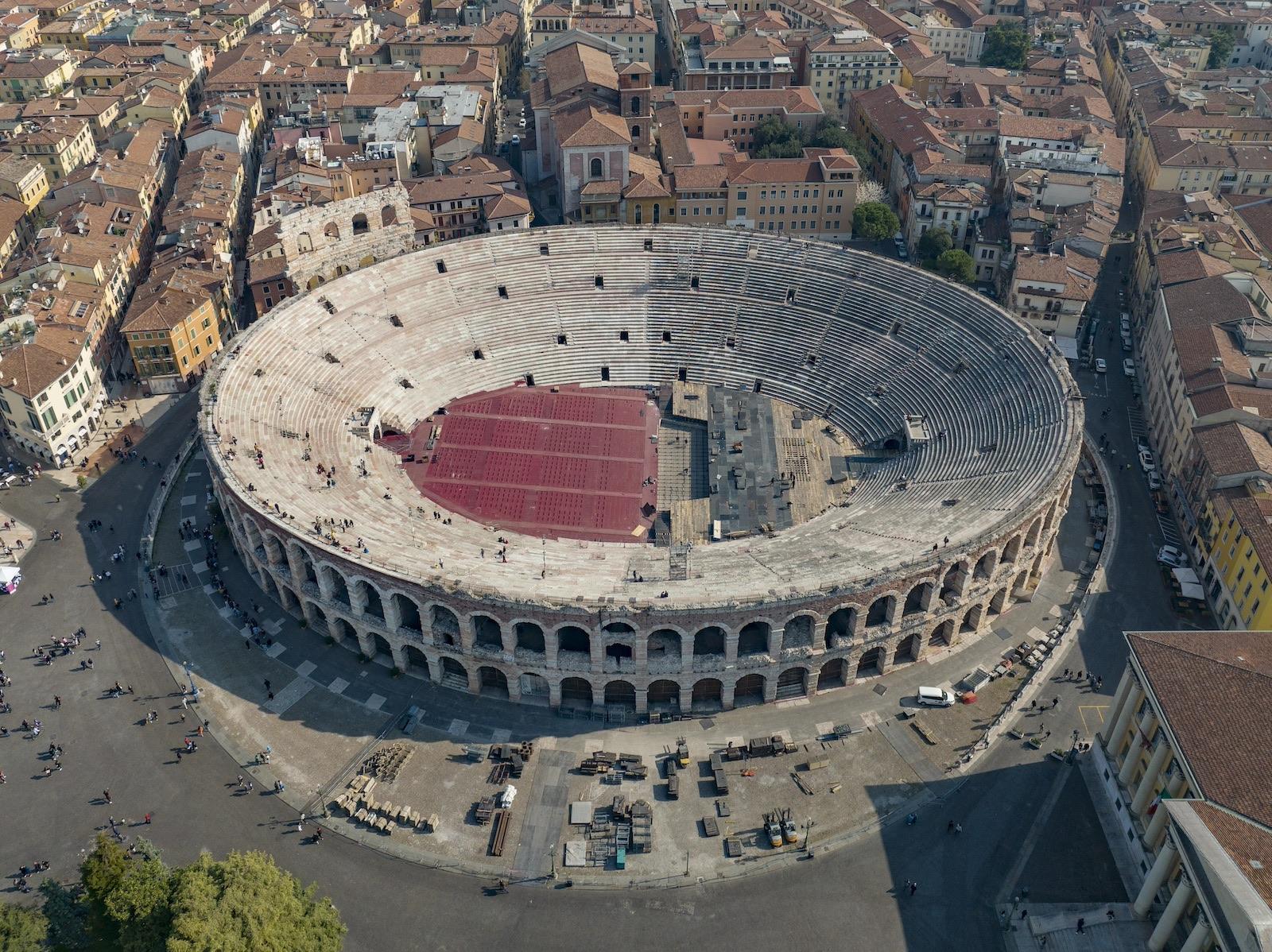
Aerial view of Arena in Verona, Italy. 2022. Photograph by © Arne Müseler. License
With a robust food culture and deep, rich history, Italy is the fifth most touristic country in the world, bringing in about 50 million visitors per year. Vacationing there in peak seasons, however, can often feel more like an exercise in patience and crowd-navigation than an opportunity for relaxation and cultural immersion. Long lines, over-priced restaurants, and overcrowding have all presented huge problems at many of Italy’s most famous locations.
Many tourists have sought to beat the crowds by visiting some of Italy’s numerous open-air archaeological parks. However, these sites are often still plagued by swarms of guests. Pompeii, for example, garnered over 2.5 million visitors in 2022 alone, while the city of Rome, home to ancient marvels such as the Colosseum, Pantheon, and Roman forum, saw over 15 million visitors.
So, where can one go to avoid the crowds while still taking in Italy’s amazing ancient past? Continue reading to see our top ten alternative suggestions for archaeological sites that you can visit in 2024, beyond Pompeii and Rome.
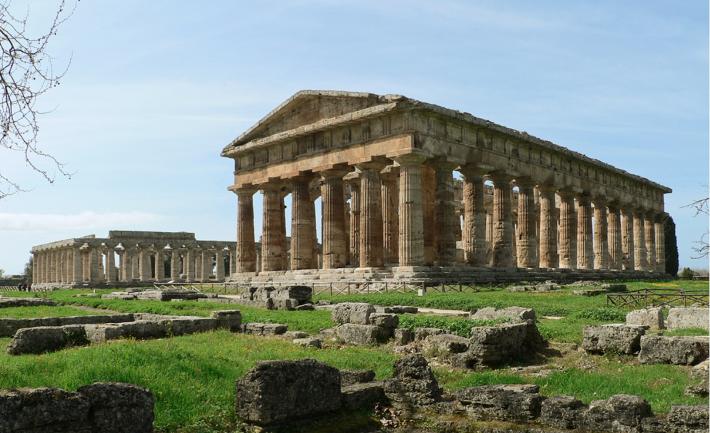
Originally called Poseidonia by Greek settlers who founded it around 600 BCE, Paestum is located in what is now known as the Province of Salerno, towards the bottom of the Italian peninsula. This Greek colony was a thriving city and experienced two centuries of prosperity, during which the inhabitants constructed three grand temples of the Doric order– all of which have survived to this day and are considered some of the best examples of Greek temple architecture. In addition to the magnificent temples, excavations at Paestum have also uncovered and restored: portions of the ancient city walls; the ekklesiasterion, a city assembly building; swaths of the later Roman city; and a peculiar structure called the heroön, a tomb in the center of the city dedicated to its heroic founder.
Tombs from the city’s Greek necropolis have also produced strikingly well-preserved fresco paintings which can now be viewed at the archaeological museum next to the park. In whole, the excavated portion of the city covers about 25 hectares and is mostly flat terrain– making the park easily doable in a day and also comparatively more accessible than Pompeii’s narrow, bumpy, and sometimes steep roads and sidewalks.
Paestum is accessible by train, car, or bus. The closest major stations are in Naples. The modern town of Paestum is also very close to lovely, sandy beaches.
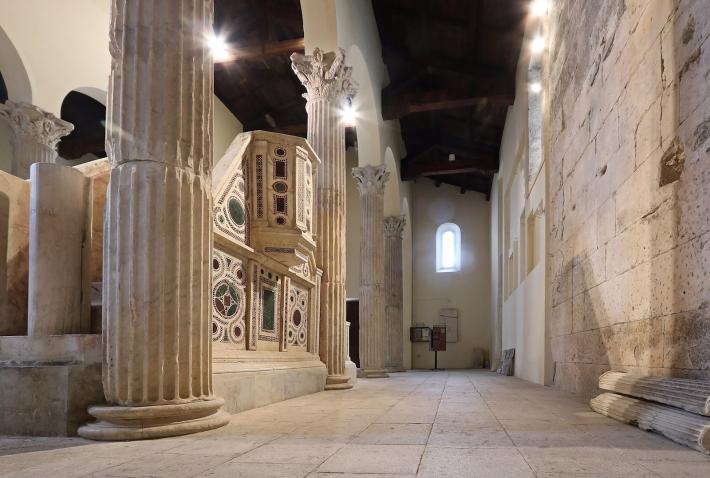
In the mountainous Abruzzo region nestled amongst the Apennines, Alba Fucens is a site with a rich Roman history and many wonderful ruins to see. Settled by Latin tribes in the 4th century BCE, Alba Fucens played an important role in many of Rome’s foundational conflicts, such as: the Punic Wars against Carthage; the Social War between Rome and its autonomous allies; and even the Civil Wars between Pompey the Great and Gaius Julius Caesar, and later between Marc Antony and Augustus. The town managed to survive these many conflicts and experienced a time of great prosperity, as is evident by the many inscriptions found at the site denoting imperial favor, as well as the increase in size and construction after Augustus’ rise to power.
Though the site experienced a destructive event at the hands of the Saracens in the 10th century CE, many of the Roman structures were uncovered during later excavations and are visible today. These sightings include large parts of the city, the forum, the amphitheater, the aqueducts, and multiple temples. One temple in particular, the Temple of Apollo, was later converted into the Catholic church of San Pietro. The melding of these two structures is a fascinating glimpse into the persistence and reuse of ancient structures for later cultural purposes.
Alba Fucens is accessible by train, car, or bus. The closest major stations are in Rome.
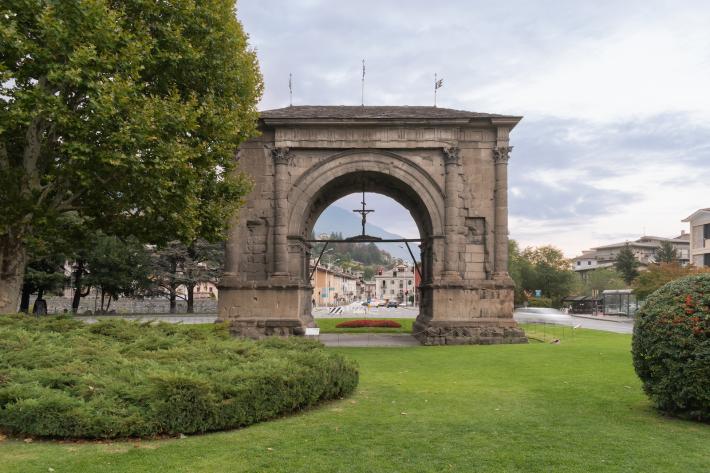
A few hours north of Milan and Turin, very near to the Italian border between Switzerland and France, is Aosta– sometimes called the “little Rome of the Alps.” Originally a settlement of the Salassi people, Rome conquered the region and settled a colony in 25-24 BCE. The town was later named the capital of the Roman province, Alpes Graies. Because of its strategic importance at both a mountain pass and the confluence of two major rivers, Aosta grew in size and prestige during the Roman period and saw a significant amount of construction.
Around and within the modern city, visitors have many options of architectural remains to explore, including: the city center, its walls, roads, and gates; a forum; a triumphal arch in honor of the first emperor Augustus (one of the best preserved examples we have); the amphitheater; a villa; and the ancient theater. The theater is of particular interest, representing an architectural type that is not often preserved in many Roman towns. At 72 feet tall, the theater is a wonderful example of Roman imperial construction, exhibiting a magnificent series of arches and buttresses. It is estimated that at its height, the theater could hold as many as 4,000 spectators.
The Alpine regions of Italy are typically not as touristy as the more central and southern cities, so Aosta is a wonderful option for a step away from the hustle and bustle of Rome, Florence, and Milan. In addition to Italian, French is also a major spoken language in this region.
Aosta is accessible by train, car, or bus. The closest major stations are located in Milan and Turin.
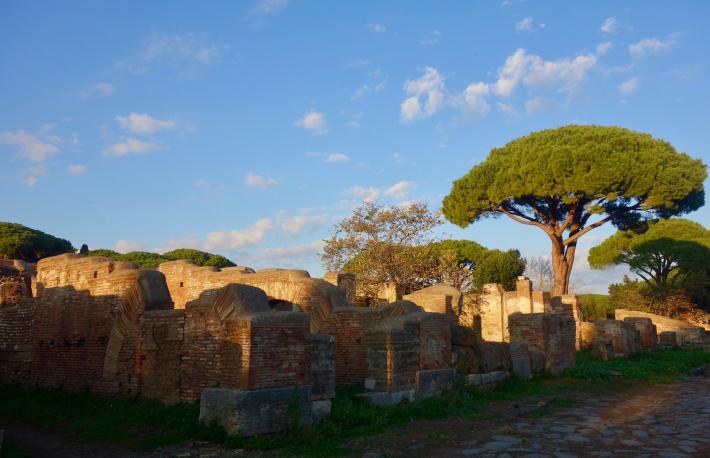
If your trip won’t allow you to go too far afield from a major city center, Ostia Antica is just 16 miles from downtown Rome and is the perfect way to escape the hectic urban buzz as it offers some of the most wonderful Roman ruins to survive. Today, Ostia is situated about 2 miles from the sea due to silting and coastline changes. However, it once served as Rome’s major port town, nestled just on the south banks of where the Tiber let out into the Adriatic Sea. Romans may have begun building up the port sometime in the 7th century BCE, though the oldest archaeological remains date back only to the 4th century BCE.
Originally organized as a military camp (or castrum), the port town quickly grew into a bustling city in its own right and was the point through which the vast majority of overseas shipments coming to and from Rome passed. Because of its mercantile and strategic importance, Ostia saw many dramatic historical events including attacks during the Roman Civil Wars in the 80s BCE, as well as sacking by pirates in the 60s BCE.
Despite these setbacks, by the 2nd and 3rd centuries CE, Ostia grew to an estimated 100,000 inhabitants and became home to numerous, major structures such as a theater, a forum, bath houses, temples and shrines, the harbor and port (large parts of which were artificially constructed by Roman engineers), and many shops and houses. Much of Ostia has been so well preserved that some multi-story apartment buildings and entire neighborhood blocks have survived. The city’s necropolis is also well worth a visit and showcases many examples of late Republican and imperial burials. Throughout the city’s many structures, one will also find countless mosaic floors and frescoes of exquisite quality.
Ostia is accessible by train, car, or bus. The closest major stations are in Rome.
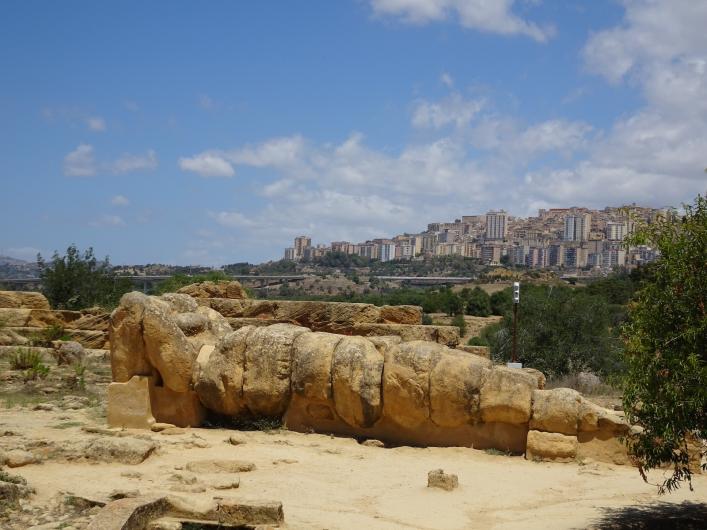
Located on the southwestern coast of Sicily, the ruins of Agrigento, a 6th century BCE Greek colony, look out over the Mediterranean Sea. Founded by colonists from nearby Gela, the settlement flourished not too long after its initial settling around 582 BCE, with many public works and temples constructed. The city existed at a strategic location within the island, and thus experienced such a level of prosperity that it was one of the first Greek communities on Sicily to begin minting its own coinage.
Agrigento’s complex and fascinating history extended throughout the entire Greek period, past the Roman conquest, into the Middle Ages, and through today. Though the population eventually shifted away from the ancient city centers, much of the Greek, and later Roman, construction has been preserved. Perhaps the most impressive portion of Agrigento is the so-called Valley of the Temples (Valle dei Templi), where seven monumental Doric-style temples were built during the 6th and 5th centuries. Only some of the temples have received at least partial reconstruction, but they are still some of the largest and best preserved surviving Greek temples.
The Temple of Concordia, for example, is almost entirely intact. Most recently, researchers and restorers have also re-erected one of the famous Telamons– an 8-meters tall statue that would have been incorporated into the design of the largest temple at Agrigento and dedicated to Olympian Zeus. Beyond the temples, many other aspects of the ancient city and its many interactions can be seen at and around Agrigento, including funerary monuments, parts of the necropolises, the Roman forum, and more.
Agrigento is accessible by bus or car from the modern town. The modern town itself can be reached by train or bus from other major cities on Sicily, such as Palermo, Syracuse, and Catania.
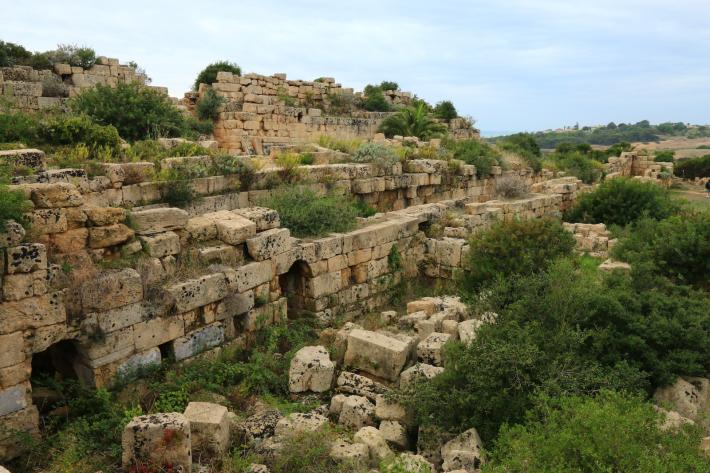
Founded by colonists from the Sicilian city of Megara Hyblaea around 630 BCE, Selinunte is perhaps best known today for its magnificent ancient temples and stunning views. The city took its name from the Greek word for celery (selinon or σέλινον) on account of the abundance of wild celery growing in the area. Selinuntian minted coins also bore a celery leaf on them as symbols of the city.
Being the most westerly Greek settlement on Sicily, the inhabitants of Selinunte came into contact with many indigenous peoples of the island, as well as the seafaring Phoenician peoples. While hostilities do not appear to have occurred at the city’s infancy, by around 580 BCE and into the 400s BCE, Selinunte is known to have been in conflict with multiple entities and was also involved with Carthage’s many forays into Sicily. Selinunte, through various conflicts involving Carthage, experienced two major destruction periods– one in the early 400s BCE and another in the 200s BCE during the Punic Wars. Ancient sources do not note it as an inhabited town during the Roman period.
Despite its tumultuous lifespan, the ruins of Selinunte are visible today and well worth the trip. Large areas of the acropolis and city center have been excavated and many of its magnificent temples are still standing. While some of the archaeological materials found at Selinunte now live in the Archaeological Museum at Palermo, temple fragments and statuary can still be seen in situ at the Selinunte archaeological park. The ancient city also commands an impressive view of the Mediterranean and one can find beautiful beaches in the nearby area.
Selinunte is accessible by bus or car. To access Selinunte by train, one will have to transit through a nearby town and then take a bus or taxi.
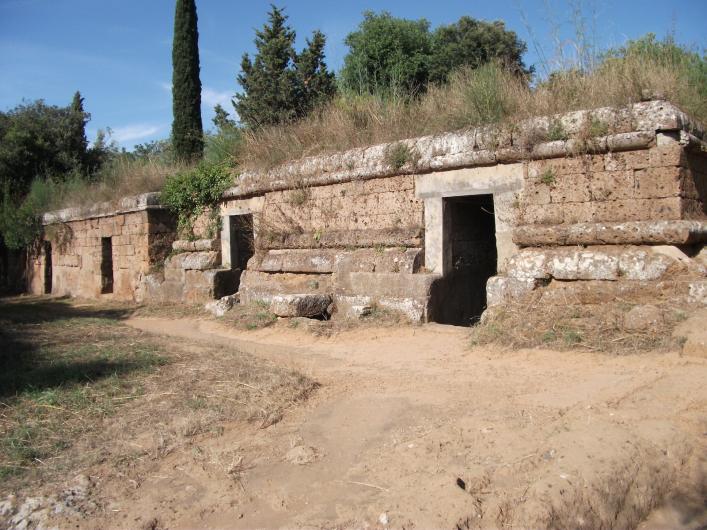
Cerveteri is a rather unique and stunning archaeological park located in the Lazio region of Italy, about an hour north of Rome. Known to the Romans as Caere, the city was once one of the most important and populated Etruscan city-states. Its earliest habitation is dated to the 9th or 8th centuries BCE, but trade between the Greeks and Etruscan quickly led to Caere’s rapid development into the 7th and 6th centuries. The tombs of the 7th century BCE point towards the city’s early successes with sumptuous gold and imported pottery filling many of the more prominent graves.
Caere continued to experience stable wealth and prosperity up through the 5th and 4th centuries, and the city maintained relatively good relations with the growing city of Rome up through the 3rd century. However, much of Cerveteri’s status and importance began to wane as the more powerful Roman Republic began to rapidly expand throughout Italy into the 2nd and 1st centuries BCE.
Today, Cerveteri is best known for its impressive tumuli in the Etruscan necropolis, constructed to house the remains of the city’s wealthy and illustrious. Many of the tombs are accessible to the public and can be descended into. Here, visitors will find marvelous rock-cut and possible painted decorations within. (Please note: the tombs are not handicap accessible.)
Cerveteri is accessible by train, car, or bus. The closest major stations are in Rome, where the Villa Giulia museum houses many of the objects excavated at Cerveteri.
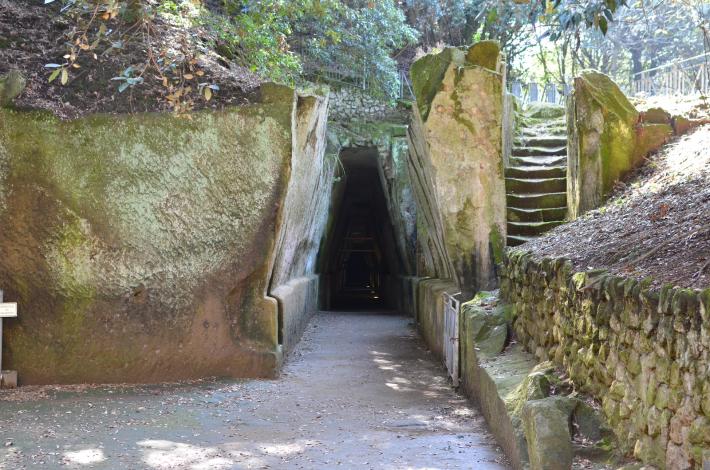
Though Cumae later became known as a prosperous Roman town during the imperial period, it actually holds the record as the first Greek settlement on mainland Italy, dating back to 900-850 BCE. Cumae’s early history is rife with political interest as the city was often at odds with the nearby indigenous populations and in close contact with Rome in the 6th and 5th centuries BCE. The city even played host to the exiled last king of Rome, Tarquin the Proud. By 421 BCE, the height of the Greek period at Cumae came to an end and the city experienced some setbacks up until 343 BCE when it went under complete Roman control.
Under the Romans, Cumae and the surrounding region prospered greatly, supporting a robust population and much construction. The city once again experienced setbacks in the late antique period, as it was sacked during the Gothic Wars. Afterwards, marshes began forming in the area leading to the abandonment of the ancient city. As such, much of the architecture there was left in situ for the modern visitor to now see. Highlights at Cumae include: the Crypta Romana; the Roman baths and forum; temples to Zeus and Apollo; and the Cave of the Sibyl.
Cumae is accessible by train, car, or bus. The closest major stations are in Naples.
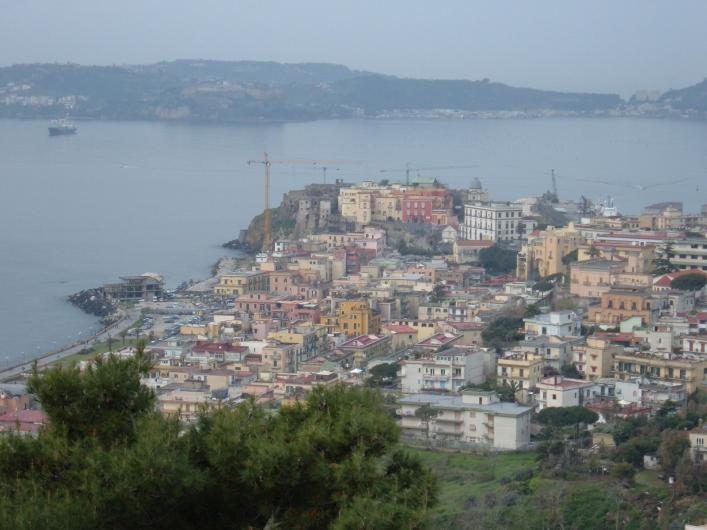
Also in the Gulf of Naples is another ancient site with stunning ancient ruins: Pozzuoli. Like many of the other ancient cities in the region, Pozzuoli began as a Greek colony around 531 BCE and experienced relative success and prosperity up through the 2nd century BCE. It was made an official Roman colony in 195 BCE and proceeded to serve as a critical port for foreign trade for the powerful Republic. Goods from all across the Mediterranean world passed through Pozzuoli’s port; many poly-lingual inscriptions from the site have demonstrated just how diverse its breadth of goods and peoples moving through its streets were.
The unique ecological nature of the volcanic landscape also contributed greatly to Pozzuoli’s wealth and fame. In fact, the Roman concrete formula, known for its incredible durability and hydrophobic properties, contains a local volcanic sand called pozzolana. Concrete mixed with pozzolana is the basis for many of Rome’s most famous structures, including the Pantheon, which remains to be the world’s largest, unreinforced concrete dome.
Pozzuoli suffered destructive events in late antiquity, and it took many centuries until the city bounced back. Today, the modern city has been built up around and atop the ancient city, but much of the Roman ruins are easily able to be visited. Main sights include: the Roman market (macellum); the Amphitheatre; the Temple of Augustus; the various necropolises just outside the city; and the Solfatara (the volcanic crater nearby with active fumaroles).
Pozzuoli is accessible by train, car, or bus. The closest major stations are in Naples. Seismic activity is not uncommon in this area, so please be sure to read up on local procedures should a seismic event occur.
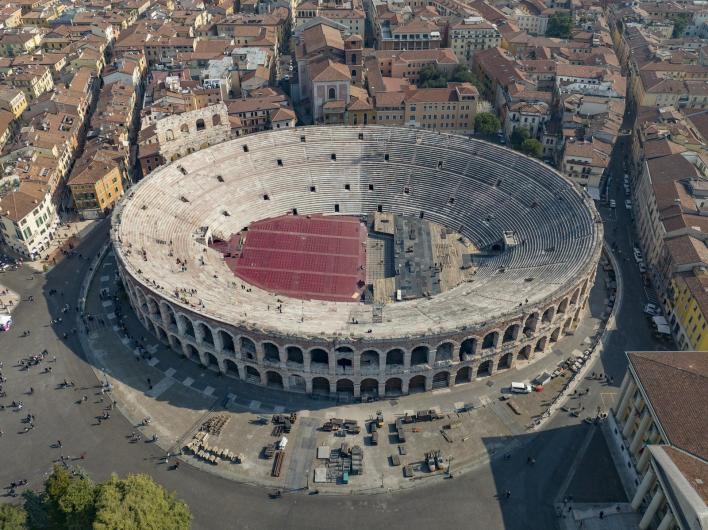
Though perhaps most famous for providing the setting of Shakespeare’s Romeo & Juliet, Verona’s history far exceeds the Renaissance. The exact details of the city’s origins are murky. Some theories posit that the area was settled sometime around or before 550 BCE, while others argue that it was not properly settled until the 2nd century BCE. Either way, the city of ancient Verona quickly made itself an ally of Rome early on, fighting alongside Roman forces during the Teutones and Cimbri invasions in the 1st century BCE. By 89 BCE, Verona was made an official colony of the Roman Republic, and in 49 BCE, it was fully incorporated into the Republic as a municipium whose citizens were also full citizens of Rome.
Monumental construction quickly followed this incorporation and the city soon boasted aqueducts, a forum, an arena (amphitheater), many bridges, city gates, and a theater. Verona has been constantly inhabited since the Roman period and, as such, many of the Roman ruins are ensconced within the modern city. Larger monuments, like the amphitheater, stick out rather obviously, while other aspects of the ancient city are scattered across modern Verona as peek-a-boo Easter eggs between the cracks of newer construction.
Verona is accessible by train, car, or bus, and also has a local airport. Other major cities nearby include Venice, Milan, and Bergamo.
Danielle Vander Horst
Dani is a freelance artist, writer, and archaeologist. Her research specialty focuses on religion in the Roman Northwest, but she has formal training more broadly in Roman art, architecture, materiality, and history. Her other interests lie in archaeological theory and public education/reception of the ancient world. She holds multiple degrees in Classical Archaeology from the University of Rochester, Cornell University, and Duke University.























